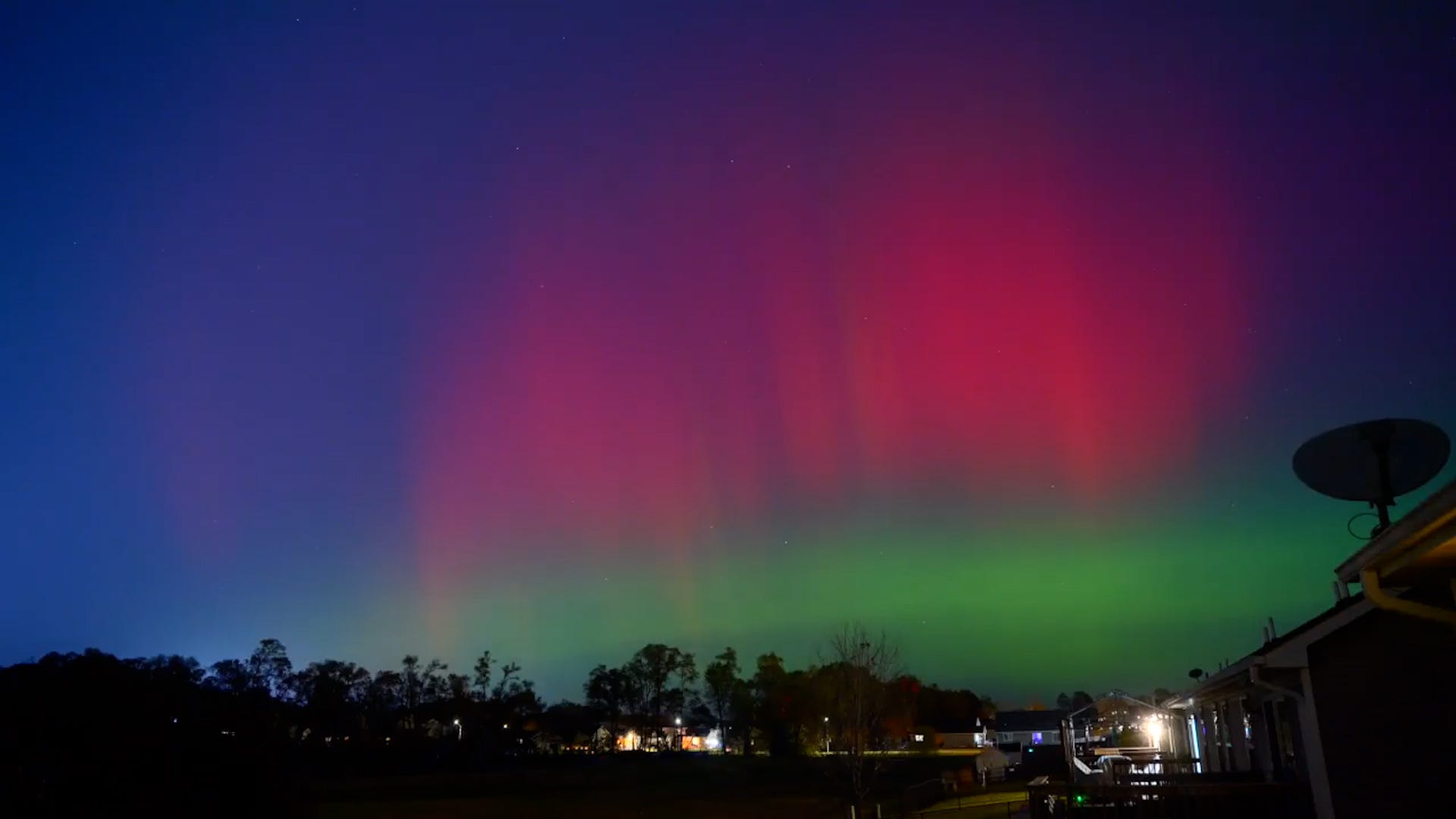
Northern lights, auroras seen as far south as Texas and Florida
The powerful geomagnetic storm hit Earth’s atmosphere causing brilliant northern lights across multiple states.
Some lucky Americans may get a chance to view nature’s dazzling light show, the northern lights, just in time for Thursday’s Thanksgiving festivities.
The phenomenon will be visible beginning in the late-night hours of Wednesday, Nov. 26, and continuing into the early morning of Thursday, Nov. 27, according to the National Oceanic and Atmospheric Administration (NOAA) Space Weather Prediction Center.
NOAA predicts a minor to moderate geomagnetic storm amplified by a high-speed solar wind stream, meaning the lights could be seen a bit farther south than usual. The coveted light display will be visible in 10 U.S. states.
Here’s what to know about this week’s chance to view the aurora borealis, also known as the northern lights.
When will the aurora borealis be viewable?
People in 10 U.S. states may get chances to see the aurora display the night of Wednesday, Nov. 26, into early Thursday morning, Nov. 27. The geomagnetic storm behind the lights is expected to peak between 4 p.m. and 7 p.m. ET and again between 10 p.m. and 1 a.m ET, according to NOAA’s projection, though this can vary significantly by location and as forecasts are updated.
Predicting the timing of viewing is a less-than-perfect science, as experts rely on NASA satellites to measure the effects of the solar wind and magnetic intensity. Check NOAA’s 30-minute Aurora forecast to get regular updates on the best times for viewing.
Which states will be able to see the aurora borealis?
In the United States, the celestial display will be most viewable in the northernmost regions. According to NOAA’s projection, this could include at least some visibility from:
AlaskaWashingtonNorth DakotaMinnesotaMontanaMaineMichiganWisconsinSouth DakotaIdahoWhat are the ‘northern lights,’ also known as aurora borealis?
The northern lights are a luminous glow seen around the magnetic poles of the Northern and Southern Hemispheres, according to the University of Alaska Fairbanks Geophysical Institute. Known for creating ribbons of colorful light in the night sky, the aurora borealis are polar lights, or aurora polaris, that appear in the northern hemisphere.
The southern hemisphere has its own polar lights known as the southern lights, or aurora australis, which create their own dazzling displays.
Put simply, auroras are a result of the sun interacting with the Earth’s atmosphere. A collision between electrically charged particles from the sun and gases in Earth’s atmosphere produces a series of minuscule flashes that appear like moving lights in the sky. The charged particles are pulled toward the North and South poles due to Earth’s magnetic field.
While that magnetic field usually protects the Earth from solar winds, the winds can occasionally get strong enough to bypass the field, allowing particles and gases in the magnetosphere to interact and generate the colorful displays, according to the Geophysical Institute and the Canadian Space Agency.
Tips for viewing the northern lights
The top tip for getting the best view of the northern lights is finding a dark spot away from light pollution. Space.com recommends finding a location as far from city lights as possible and heading out there as soon as the sky gets dark. Then, it’s a waiting game.
Find a north-facing view with a clear horizon and exercise patience, as the lights often come in waves, said Space.com. You can also download apps to track aurora forecasts based on your location, such as “My Aurora Forecast & Alerts.”

